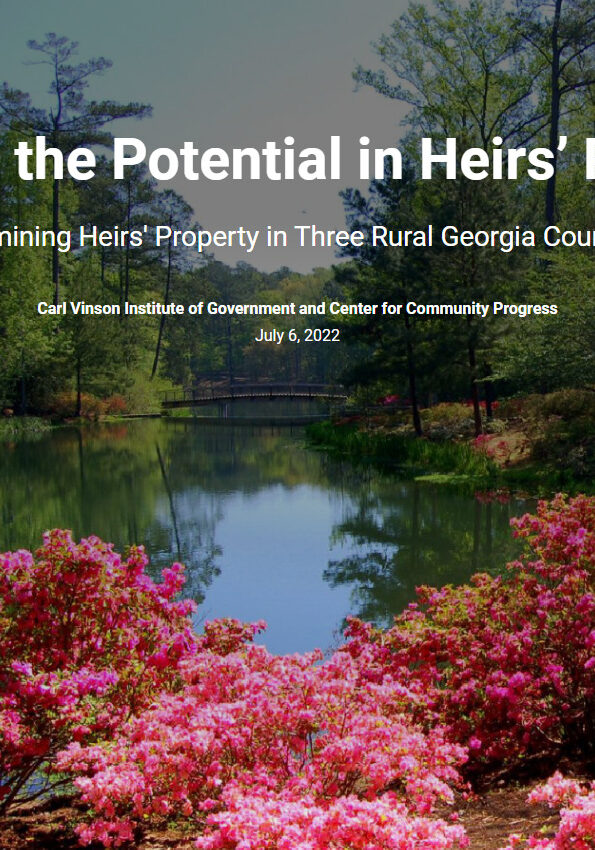Unlocking the Potential in Heirs’ Properties
Examining Heirs' Property in Three Rural Georgia Counties
Topic(s): State & Local Analysis
Published: September 2023
Geography: Georgia
Author(s): Carl Vinson Institute of Government and Center for Community Progress
Heirs’ property, sometimes known as “family land,” refers to the situation in which a legally designated property owner dies without a probated will, resulting in ownership of their property being equally divided among the owner’s descendants. These types of properties are found throughout the United States in urban, suburban, and rural communities. When unclear ownership is allowed to linger, negative outcomes follow. Stuck in legal limbo, heirs’ properties can fall into disrepair and become vacant or tax delinquent.
Neighborhoods with a high number of vacant or tax delinquent properties face a host of negative impacts, including:
- Worse public health outcomes: Unsafe environments for occupants (e.g., lead, asbestos), neighbors (e.g., attracting crime, rodent harborage, physical threat), and harm to mental health
- Loss of individual wealth: The value of surrounding properties decline, threatening homeowners’ investment; insurance premiums rise; property deterioration can exceed cost-effective repair; and the lack of clear title can restrict heirs from qualifying for property repair assistance, receiving property tax relief, or selling the property
- Diminishing community fiscal stability: Lower property values from vacant and deteriorated properties lead to reduced tax base, while simultaneously municipal service costs rise (e.g., fire response, police response, code enforcement)
Of Georgia’s 159 counties, 120 are considered rural. Challenges with heirs’ properties are a primary barrier to revitalization strategies in these rural counties, and heirs’ properties disparately impact Black neighborhoods due to the deep roots of institutional and structural racism. However, the lack of a data-driven analysis on the scale and location of these heirs’ properties presented a barrier to effectively addressing them.
In 2017, the Carl Vinson Institute of Government (CVIOG) published a report entitled Identifying Potential Heirs Property in the Southeastern United States: A new GIS methodology using mass appraisal data, in conjunction with the U.S. Forest Service. This report examined the possibility of using digital data compiled by local tax assessment officials to assess the relative significance of the occurrence of heirs’ property, often referred to as computer assisted mass appraisal data, or computer-assisted mass appraisal (CAMA) data.
Previous efforts to assess the extent of heirs’ property in a community involved manual review of tax assessor’s paper records and deeds. This approach is extremely cumbersome and time consuming. Utilizing CAMA data streamlines that process, at least as an initial prioritization tool. This project found the relatively uniform format of CAMA data across Georgia’s counties provided opportunities to identify factors that can indicate the relative extent and impact of heirs’ property across Georgia communities.
To advance the Center for Community Progress’ understanding of heirs’ property issues in rural Georgia and CVIOG’s interest in refining its research methodology with CAMA data, Community Progress commissioned this analysis of three rural counties: Crisp, Dougherty, and Worth. This project extends the mass appraisal data approach by using census data and CAMA data in Georgia to automate and further refine the heirs’ property identification process. It also allows for a spatially oriented, geographic assessment of potential heirs’ properties. In this way, the project demonstrates a promising new research methodology that may be applied more broadly to conduct statistical and comparative analyses.

Topic(s): State & Local Analysis
Published: September 2023
Geography: Georgia
Related Publications
Other Related Content
Subscribe to join 14,000 community development leaders getting the latest resources from top experts on vacant property revitalization.
